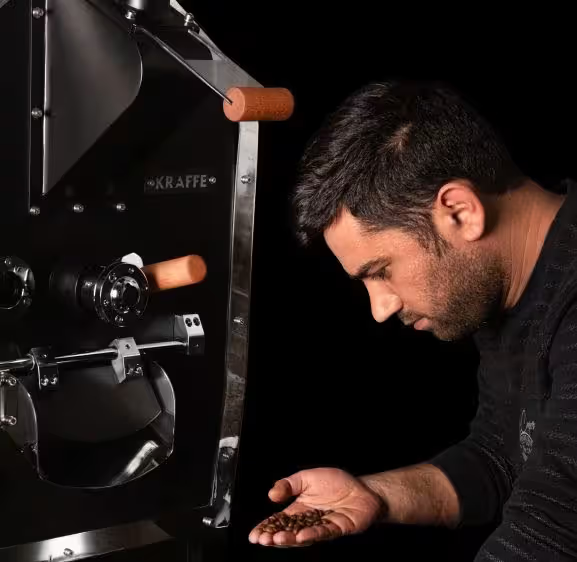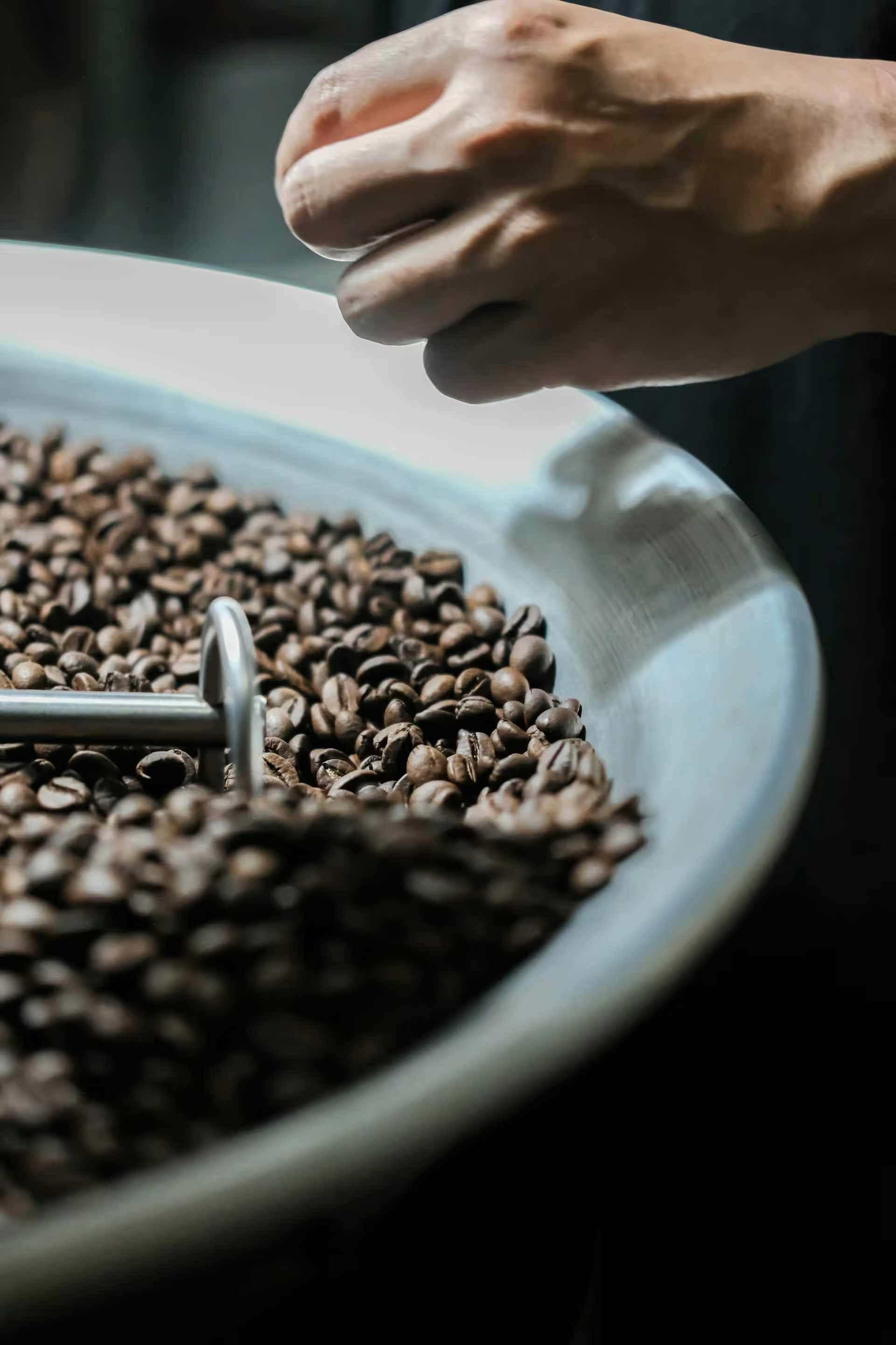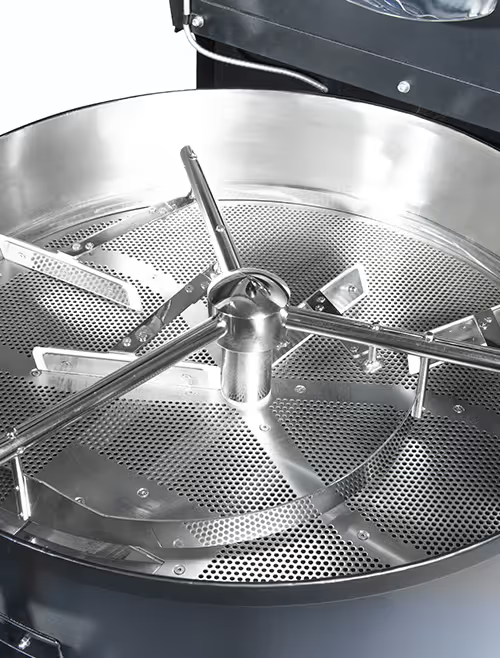The world of coffee roasting is a captivating blend of science, art, and craftsmanship. At its heart lies the intricate process of creating coffee roasting profiles – a journey that transforms raw green coffee beans into the aromatic and flavorful brews we adore. Whether you’re a home roasting enthusiast or a professional barista operating a sophisticated commercial coffee roaster, understanding the nuances of crafting the perfect roasting profile is the key to unlocking the full potential of your coffee beans. In this in-depth exploration, we’ll delve into the art and science behind creating coffee roasting profiles, providing you with the knowledge and tools to elevate your coffee roasting game.
The Science Behind Coffee Roasting Profiles
Coffee roasting is a delicate dance of chemical reactions that occur within the beans when subjected to heat. These reactions drive the development of flavor compounds, aromatic oils, and the iconic deep brown color we associate with roasted coffee. A coffee roasting profile is essentially a roadmap that guides the roasting process, determining the heat and time parameters at each stage to achieve a specific flavor profile.
Step 1: Selecting the Perfect Beans
Every coffee journey begins with selecting the right beans. Factors such as origin (e.g., Ethiopian Yirgacheffe, Colombian Supremo), variety (e.g., Arabica, Robusta, and their sub-varietals like Typica, Bourbon, Geisha), and processing method (washed, natural, honey) play a vital role in influencing the flavor potential of the coffee. Understanding the unique characteristics of your beans – their density, moisture content, and inherent flavor notes – allows you to tailor your roasting profile to enhance their natural qualities.
Step 2: Preheating and Drying Phase
The roasting process kicks off by preheating the roaster to the desired starting temperature, often referred to as the “charge temperature.” Once the beans are introduced, the initial drying phase begins. During this stage, the beans shed their internal moisture content, typically from around 8-12% down to 2-5%. It’s crucial to apply heat gradually to prevent scorching the exterior of the beans while ensuring even drying throughout. This phase sets the foundation for subsequent flavor development; if not managed correctly, it can lead to uneven roasts or baked flavors.
Step 3: Maillard Reaction and Flavor Formation
As the beans continue to heat up (usually between 150°C - 200°C or 300°F - 400°F), they undergo the Maillard reaction – a complex series of chemical interactions between amino acids and reducing sugars. This non-enzymatic browning reaction is responsible for the transformation of flavor compounds, creating a diverse range of taste notes including nutty, caramel, chocolatey, and bready characteristics. The beans undergo visible color changes during this stage, progressing from green to yellow, then to various shades of cinnamon and light brown, indicating the advancement of the roast and the development of these crucial aroma and flavor precursors.
Step 4: First Crack Milestone
The “first crack” marks a pivotal and exothermic moment in the roasting process, typically occurring when bean temperatures reach around 200°C - 205°C (390°F - 400°F). The beans audibly crack or pop, similar to popcorn, as internal pressure from steam and carbon dioxide builds up and is released. This juncture is significant, as it’s a key indicator of the roast’s progression from a light roast towards a medium roast. Depending on your desired roast level, you can choose to end the roast shortly after the first crack begins for a lighter, more acidic profile, or continue developing the roast.
Step 5: Post-First Crack Development (Development Time)
Following the first crack, the “development time” or post-crack development phase comes into play. This phase, which is the time between the start of the first crack and the end of the roast, is critical for fine-tuning the flavor profile. Controlling the heat application during this stage is paramount.
- Slowing down the roast (reducing heat) during development can accentuate acidity, brightness, and delicate origin characteristics.
- Maintaining or slightly increasing heat (or simply extending the development time) can yield deeper, richer, and more soluble flavors, often with more body and less perceived acidity.
The complexity of this phase requires careful attention to detail and precise control over your roasting machine’s capabilities, as slight adjustments in time and temperature can lead to noticeable changes in the final cup.
Step 6: Cooling and Resting
Once you’ve achieved your desired roast level (determined by color, time, temperature, and sometimes the onset of “second crack” for darker roasts), it’s essential to rapidly cool the beans to halt the roasting process. Effective cooling, typically done in a cooling tray with airflow, is essential to prevent over-roasting (baking or coasting) and to lock in the desired flavors and aromas. After cooling, allow the beans to rest (or “degas”) for a period ranging from 24 hours to several days. During this resting period, the beans release excess carbon dioxide and undergo further subtle internal chemical changes that contribute to the refinement and stabilization of the flavor profile.
The Art of Iteration and Experimentation
Creating coffee roasting profiles is an amalgamation of art and science, requiring both technical knowledge and a touch of creativity. Embrace experimentation by roasting the same beans with different profiles to explore the full spectrum of flavors they offer. Keep detailed records of each roast, including:
- Green bean details (origin, processing, moisture content)
- Charge temperature
- Time and temperature mãeşələri (drying end, Maillard start, first crack start/end)
- Development time
- Drop temperature (end temperature)
- Total roast time
- Sensory observations during and after roasting (aroma, color changes)
These records will become your invaluable compass as you refine your profiles over time.
Sensory Analysis: The Proof is in the Cup
Tasting your creations – a process known as “cupping” – is the ultimate test of your roasting skills. Brew coffee using your freshly roasted beans (after adequate resting) and engage your senses. Pay close attention to:
- Aroma: Fragrance (dry grounds) and aroma (wet grounds/brewed coffee)
- Flavor: The primary taste characteristics.
- Aftertaste: The lingering sensation after swallowing.
- Acidity: The brightness or tartness – is it lively, muted, or sharp?
- Body: The perceived weight or mouthfeel – is it light, medium, or full?
- Balance: How well do all the sensory components harmonize?
Does the taste align with your intended profile? If not, refer to your roasting logs and make adjustments for your next roast. This iterative process of roasting, cupping, logging, and adjusting is central to mastering the art of creating coffee roasting profiles.
Conclusion: Your Journey to the Perfect Roast
Crafting coffee roasting profiles is a rewarding journey that beautifully blends scientific understanding with creative expression. It’s an invitation to explore the boundless flavors hidden within coffee beans and a chance to craft unique, unforgettable cups of coffee. As you dive deeper into the world of coffee roasting, you’ll discover that each roast is an opportunity for growth, learning, and innovation. Armed with knowledge, dedication, meticulous record-keeping, and a touch of curiosity, you’re well on your way to mastering the intricate alchemy of coffee roasting profiles.
Remember that understanding different coffee roasting methods and utilizing precise equipment like the Kraffe Primi Sample Roaster can significantly enhance your ability to create and replicate exceptional roasts. Your perfect cup of coffee awaits, and it’s yours to create.
For more information and high-quality roasting equipment, visit Kraffe Roasters, your trusted partner in the journey of coffee roasting excellence.


